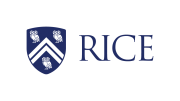The online energy simulations on this page will help you understand what energy is in physics, its main forms, such as kinetic energy and potential energy, and how it is transformed from one form to another. We will also explore the law of conservation of energy and its applications in different physical phenomena
What is energy in physics
Energy in physics is a fundamental property of nature defined as the capacity of a system to perform work. It manifests itself in virtually all physical phenomena, from the movement of bodies to thermal, electrical, or chemical changes. Understanding energy allows us to explain how processes occur and transform in the universe, and provides the basis for analyzing any physical system, from a ball in free fall to the energy stored in atoms and molecules.
Forms of energy in physics
Energy can take many forms, such as the well-known kinetic energy or potential energy, or the lesser-known thermal energy, electrical energy, and chemical energy. Each of these forms manifests itself in different physical or chemical phenomena and processes, and in many cases can be transformed from one form to another. This capacity for change, together with the law of conservation of energy, explains how energy moves and transforms in nature and in the technology we use every day.
Kinetic energy
Kinetic energy is the energy a body possesses due to its motion. The greater the mass of the object and the faster its speed, the greater its kinetic energy. For example, a moving car or a thrown ball has kinetic energy because it is moving.
Potential energy
Potential energy is the energy stored in an object due to its position or configuration within a force field, such as gravitational or elastic. For example, a ball at the top of a hill has gravitational potential energy, because when it is released it can be transformed into kinetic energy as it descends. This form of energy depends on both the height or position of the object and the force acting on it.
Other forms of energy
In addition to kinetic energy and potential energy, there are other forms of energy that manifest themselves in different physical and chemical phenomena. Thermal energy is associated with heat and the microscopic movement of particles in a body. Electrical energy is related to the presence and flow of electrical charges, and chemical energy is stored in the bonds between atoms and molecules, being released or absorbed in chemical reactions.
Law of conservation of energy
The law of conservation of energy is one of the fundamental principles of physics. It states that the total energy of an isolated system, i.e., a system that does not exchange energy with its surroundings, remains constant over time. This implies that energy cannot be created or destroyed, only transformed from one form to another.
For example, when an object falls, the gravitational potential energy it possesses due to its height is progressively converted into kinetic energy associated with its movement. If we consider the entire system, the sum of both energies remains constant, regardless of temporary losses due to friction or other internal forces.
This principle applies to all types of physical systems, from a simple pendulum to complex mechanisms such as engines, electrical circuits, or chemical processes, and forms the basis for understanding how energy is conserved and distributed in nature.
Energy applications
Energy is a central concept in virtually all areas of science and technology. It allows us to describe and analyze phenomena as varied as heat transfer, the movement of bodies, chemical reactions, and electricity generation.
Understanding energy is essential for designing and optimizing modern technologies, from engines and power plants to electronic devices and transportation systems. Furthermore, knowing how energy is transformed and conserved is key to developing sustainable and efficient solutions that enable us to meet current and future energy challenges, including the use of renewable sources and the reduction of environmental impact.
The study of energy is also essential in science education, as it provides a common framework for understanding different physical and chemical phenomena, facilitating the transition between abstract concepts and practical applications.
Explore the exciting STEM world with our free, online simulations and accompanying companion courses! With them you'll be able to experience and learn hands-on. Take this opportunity to immerse yourself in virtual experiences while advancing your education - awaken your scientific curiosity and discover all that the STEM world has to offer!
Energy simulations
- Kinetic
- Potential
- Conservation
- Bullet
- Roller
- Pendulum
- Astronaut
- Skate I
Kinetic energy
Observe how the kinetic energy of this vehicle varies as its mass and speed change and see how its ability to pull the block changes.
Potential energy
Observe how the kinetic energy of this vehicle varies as its mass, initial height and the slope of the fall (?) change and see how its ability to drag the block changes.
Law of conservation of energy
This simulation allows us to the law of conservation of energy. Notice how energy changes from kinetic to potential or elastic energy. Why doesn’t the vehicle stop?
Kinetic energy of a bullet
This simulation is an example of energy transformation. The kinetic energy of a cannonball is converted into potential energy. Do you know how high the bullet rises? And what is its velocity when it falls?
Conservation of Mechanical Energy in a Roller Coaster
This simulation shows a motorless roller coaster: when the car is raised to its highest point, potential energy builds up, and as it descends, that energy is converted into kinetic energy. As the car goes up and down, the sum of its potential and kinetic energy remains almost constant, dynamically illustrating the principle of energy conservation and the transformation between mechanical forms. In real-world systems, friction and air resistance reduce the total energy, but this model clearly shows the ideal behavior in an isolated system.
Energy in a pendulum
When the pendulum is released, it begins to swing back and forth. At what point are the kinetic energy of the ball maximum and minimum? What happens if there is no air (zero density)? Does the law of conservation of energy hold true?
Energy skate park I
This simulation allows you to explore how a skater moves on an ice track with curves and slopes, visually illustrating the changes between kinetic and potential energy. By adjusting the initial height, the shape of the track, or adding friction, you can observe how energy is transformed from one form to another and how the sum of both remains constant when the system is isolated. It is an excellent tool for understanding the law of conservation of energy in a dynamic and accessible context. Learn about energy conservation with a skateboarder!
File
- Bicycle
- Vehicles
- Pendulum
- Spring
- Astronaut
- Skate
Kinetic energy of a bicycle
As the person starts pedaling, the speed and kinetic energy increase, do they increase at the same rate?
Kinetic energy, mass and speed
Try to give the same amount of energy to the three vehicles and observe their speeds. Which vehicle moves with more speed for identical energy?
Energy in a pendulum
When the pendulum is released, it begins to swing back and forth. At what point are the kinetic energy of the ball maximum and minimum?
Energy skate park
Learn about energy conservation with a skateboarder! Build tracks, ramps and jumps for the skater and see the kinetic energy, potential energy and friction as he moves. Measure speed and adjust for friction, gravity and mass – you can also put the skater on different planets or in space!
File
Giants of science
“If I have seen further, it is by standing on the shoulders of giants”
Isaac Newton

Archimedes
–

Leonhard Euler
–
Become a giant


Mechanics, Part 2



Mechanics, Part 1



Dynamics and Control



AP® Physics 2: Challenging Concepts



AP® Physics 1 – Part 4: Exam Prep



The Basics of Transport Phenomena



Pre-University Physics































